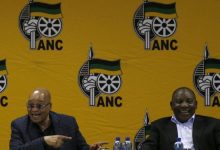Indian economy is headed for another tough fiscal year (2018-19) both from a likely budget-fuelled inflationary surge within and from global rate rises across booming economies. Here’s a report for Different Truths.
Indian economy said to be in “nascent recovery” at present, is headed for another tough fiscal year (2018-19) both from a likely budget-fuelled inflationary surge within and from global rate rises across booming economies, like the USA, which could even lead to some outflows of foreign capital invested in developing economies.
But of greater concern at present all over is the sudden turn to the volatility of global financial markets, originating in the USA. India’s stock market, which mostly takes the cue from global markets, mainly the Dow Jones (USA), has registered unprecedented falls in recent days coinciding with whatever disappointments it has had with the Union Budget announcements, notably the 10 percent tax on long-term Capital Gains.
But this alone cannot fully explain the setbacks. There may be other disappointments like the long-awaited cut in corporate tax to 25 percent not seeing fruition yet. That apart, highly volatile financial markets may not settle down to orderly conditions anytime soon, increasing overall uncertainty for macroeconomic fundamentals.
India is struggling to recover from a slowdown which has lasted for two years and has yet to stabilise the economy readjusting its finances to the rise in oil and commodity prices, and face up to the demanding challenges on the development front.
Given this context in the post-budget scenario, the Monetary Policy Committee (MPC) resolution embedded in RBI’s sixth bi-monthly Policy Statement has raised its (CPI) inflation forecast to 5.1 percent and projected an inflation range of 5.1-5.6 percent in the first half of the coming fiscal year. RBI has, however, noted signals of recovery in growth and projected GVA at 7.2 percent in fiscal 19 (over the low base of 6.6 percent in fiscal 18) on the expectation of revival in investment demand and a pick-up in exports.
There are clear indications that the Central Bank would continue to keep its key lending rate at 6.0 percent and neutral stance in monetary policy for the near future, at any rate in the first half of new fiscal year. Meanwhile, it enjoins Government on “carefully nurturing” the nascent recovery and putting growth on “a sustainably higher path through conducive and stable macro-financial management”. The expected rise in GVA at 7.2 percent is again premised on a revival in investment demand and a pick-up in exports at a time global growth is rising.
The budget-related triggers for inflation, in RBI statement, include revised guidelines on MSP for Kharif crop, increase in customs duty on several items, and the fiscal slippage which could impinge on the inflation outlook. Fiscal deficit could also result in economy-wide costs of borrowing which have started to rise, and this may feed into inflation, it says.
Also, global growth exerting on oil and commodity prices would affect domestic inflation while normalisation of monetary policy in developed economies well set on a growth path, can adversely impact financial conditions generally and undermine the confidence of external investors.
Any further rate action would thus be clearly dependent on incoming data related to developments, global and Indian, and it is inconceivable for our economy to stabilise over coming months. In this somewhat grim scenario for inflation and growth, the banking sector does not expect any monetary easing during 2018 while a rate rise may if at all, become due in the last quarter of the fiscal year.
With such reasoning, some leading private banks have begun raising their lending rates. Faced with risks of surging bond yields for their borrowings of debt and having to make more provisioning requirements, which would erode their profits. Public sector banks could follow, a lead taken by the State Bank of India.
By way of softening, the MPC-RBI policy formulation acknowledges the recovery underway, such as early signs of a revival of investment activity. It expects global demand to strengthen domestic investment activity. RBI also welcomes the Budget focus on the rural and infrastructure which would generate aggregate demand and consumption. Other signs of revival include improving credit offtake reflecting investment activity, large resource mobilisation from the primary capital market, and growing capital goods production and imports.
All expectations from the process of recapitalisation of public sector banks getting underway. and largely distressed borrowers being referenced for resolution under the Insolvency and Bankruptcy Code (IBC) should materialise in order to further improve credit flows and create demand for fresh investment In projecting GVA at 7,2 percent overall in 2018-19, RBI has made all these assumptions. Growth in the first half could in the range of 7.3-7.4 percent but slow to 7.1-7.2 percent in the second half.
This may be because the growth is from a low base of GVA at 6.6 percent in 2017-18. The Budget target for growth is 11,5 percent (current prices) and if inflation does not moderate from 5.1 to.-5.6 percent projected for the first half of new fiscal year (in RBI Policy statement), growth could lag behind the assumed range of growth for the first half at 7 percent, still a modest improvement over the previous year. Above all, there is a sudden eruption of uncertainty for the global economy from the way financial markets have tumbled in this week.
Whether the bull run gets corrected itself or how monetary authorities would attend to this sudden turn or it culminates in another recession remains to be seen. Whatever the Federal Reserve and other central banks in advanced economies decide would have knock-on effects for the rest of the world. India’s tasks at growth and stability could relatively get hardened further.
S. Sethuraman
©IPA Service
Photos from the Internet
#FederalReserve #CentralBank #RBI #IPA #DifferentTruths





 By
By

 By
By
 By
By